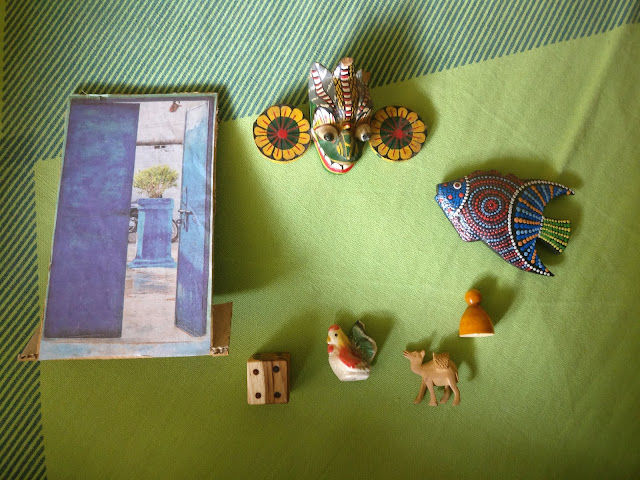The Creation of Beauty - Kathha Petti 2
Over the past week, I have been immersing in the Rasa theory and the talks on Indian aesthetics by Dr. Ganesh Shatavadhani, Ashok Vajpei, and Alka Pande. I was absolutely in awe of Dr. Ganesh Shatavadhani and how he goes on to explain the process of creating beauty in Indian traditions. I also read The Invention of Modern Aesthetics: From Leibniz to Kant, by Lars Olof Ahlberg, where the concepts of western Aesthetics are discussed at length. Baumgarten, the Father of Aesthetics gives his definition of aesthetics as, “The science of perception, whose objects are things perceived and which are to be known by the inferior faculty”. Aesthetics is thus concerned with a form of knowledge, albeit of an inferior kind compared to rational (logical) knowledge. However, after hearing Dr. Ganesh Shatavadhai and Ashok Vajpei I felt that the concept of aesthetics or literary devices as described by Western connoisseurs are rather flat and unidirectional in comparison.
In the Indian framework, the art experience is aimed at creating Rasa - emotion. It is the creation of the right amount of emotion that results in Sahridhaya or complete surrender. To enable this act of creating pure emotions the art experience uses means of Dhwani - Suggestion, Vakratha - Oblique expression, and Auchitya - Propriety choice of the right words. It is resonance or Dhwani that haunts us, Vakratha that explains one thing in many ways adding to structural beauty, and Auchitya that creates appeal. Together Dhwani, Vakratha, and Auchitya create the 8 Rasas and universal experience. Though these three elements are inseparable, upon a close examination we are able to differentiate them.
Connoisseurs identify the beauty of art experience on their own, based on the expressions or elements used, and only an art experience that creates relishing, pure emotion and distilled experiences can create Sahridhaya. The process of creating and experiencing beauty, and the Rasa’s is depicted by Dr. Ganesh Shatavadhani using this simple diagram which I am sharing below-
I tried using this Rasa framework in my second rendering piece, albeit I think I failed miserably at creating a story I was proud of.
Watch/ hear my story here-
A few experiences that I was aware of as I was rendering-
- I was trying hard to create oblique suggestions, but I felt I was explaining more than I need, dragging my story on and on. How can I not over-explain and imbibe Auchitya in oral telling is a question that has stayed with me?
- I realise I would have written this story very differently. But as I speak it I render it very differently. Something changes in oral rendition. It flows very naturally, and in this way, it can either be a disaster or a pure winner!
- The story completely changed course when the rainbow fish meets the two friends and the spell is shared. The ‘Kummatika Juice’ twist I think saved this story a bit by adding humor and a catchy twist to it. This line from a Malayalam movie came to me as I was mentally struggling to find an appropriate spell. I could not fathom an English sounding spell, and this line just exploded in my head! I wonder how!
- The voice modulation happened very naturally. I felt the story I was telling.
- Creating a good story is hard work. I don’t think I used any Vakratha, I attempted a few mediocre Rasa’s. Everything else was an utter flop as I explained too much.
I am so hoping I can try some stories in an Indian language, I am beginning to wonder if English is limiting me as a language too.




Comments
Post a Comment